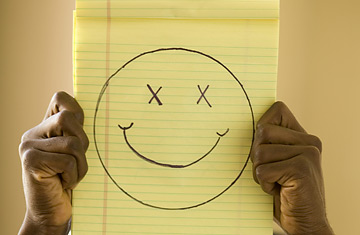
Though most of us spend a lifetime pursuing happiness, new research is showing that that goal may be largely out of our control. Two new studies this month add to a growing body of evidence that factors like genes and age may impact our general well-being more than our best day-to-day attempts at joy.
In one study, researchers at the University of Edinburgh suggest that genes account for about 50% of the variation in people’s levels of happiness — the underlying determinant being genetically determined personality traits, like “being sociable, active, stable, hardworking and conscientious,” says co-author Timothy Bates. What’s more, says Bates, these happiness traits generally come as a package, so that if you have one you’re likely to have them all.
Bates and his Edinburgh colleagues drew their conclusions after looking at survey data of 973 pairs of adult twins. They found that, on average, a pair of identical twins shared more personality traits than a pair of non-identical twins. And when asked how happy they were, the identical twin pairs responded much more similarly than other twins, suggesting that both happiness and personality have a strong genetic component. The study, published in Psychological Science, went one step further: it suggested that personality and happiness do not merely coexist, but that in fact innate personality traits cause happiness. Twins who had similar scores in key traits — extroversion, calmness and conscientiousness, for example — had similar happiness scores; once those traits were accounted for, however, the similarity in twins’ happiness scores disappeared.
Another larger study, released in January ahead of its publication in Social Science & Medicine this month, shows that whatever people’s individual happiness levels, we all tend to fall into a larger, cross-cultural and global pattern of joy. According to survey data representing 2 million people in more than 70 countries, happiness typically follows a U-shaped curve: among people in their mid-40s and younger, happiness trends downward with age, then climbs back up among older people.